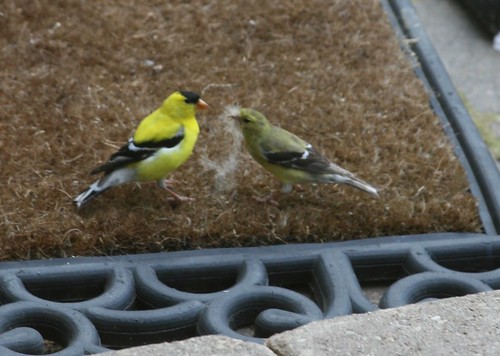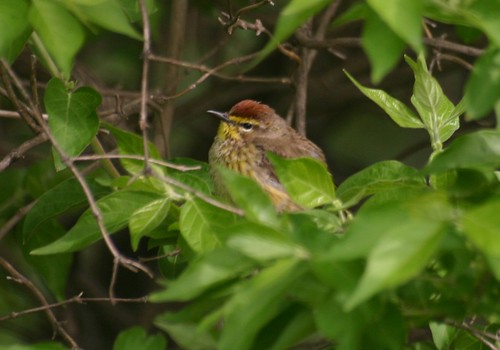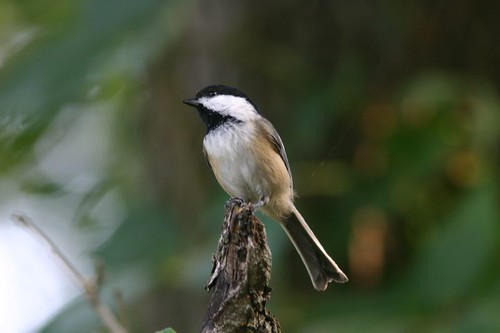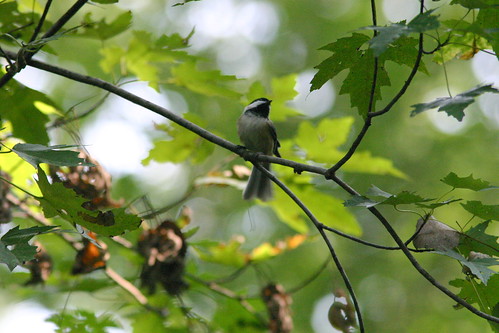Goldfinches nest later in the season than most birds. They make use of plant down, most notably from thistles and milkweed, to construct their nests. They are also one of the few perching birds whose nestlings subsist nearly entirely upon seeds. They lay their eggs when both resources are abundant. In New Mexico, I saw a Lesser Goldfinch feeding fledglings during the first week of September. The American Goldfinch nests in late June and July.
Here in suburban Batavia, Illinois, we found interesting photo
opportunities in the back yard of our daughter’s family home and the
nearby park.In late June, she captured this image through the glass of her back door, as a pair of American Goldfinches gathered dog hairs from the door mat:
In Florida, Palm Warblers are such common winter residents that some locals refer to them as “Florida sparrows.” This week, southbound Palm Warblers were quite abundant in Illinois. Several of them visited the yard. All were the dull colored Western form, while most we see in Florida have bright yellow underparts. These photos capture some of the important field marks of this species.
The lack of a bright reddish cap indicates that this is an immature bird: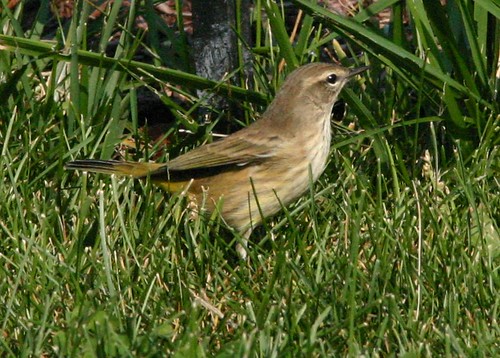
The rump and the area under the tail are bright yellow:
This spring, in Batavia’s Lippold Park, I photographed this example of an adult Palm Warbler of the brighter, Eastern race:
Nearby Hawk’s Bluff Park was full of grackles and robins partaking of the abundant berries and crab apples. This Cedar Waxwing was one of a flock clustered in a fruiting tree:
A Black-capped Chickadee responded inquisitively to my whistled imitation of its spring “fee-bee” love call, and briefly started singing:
A few days earlier at Les Arends preserve, I photographed this chickadee against a tapestry of many shades of green maple leaves:













